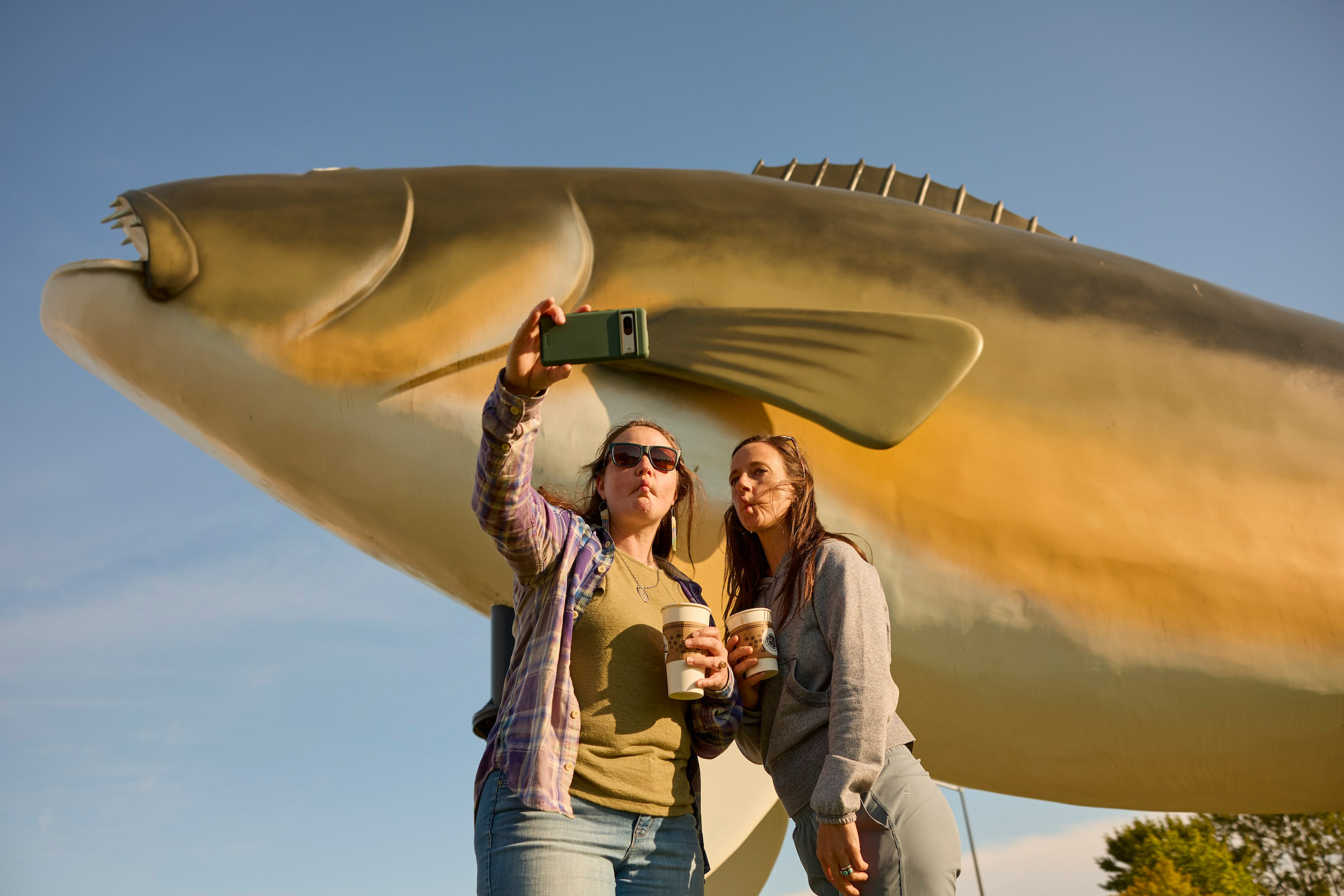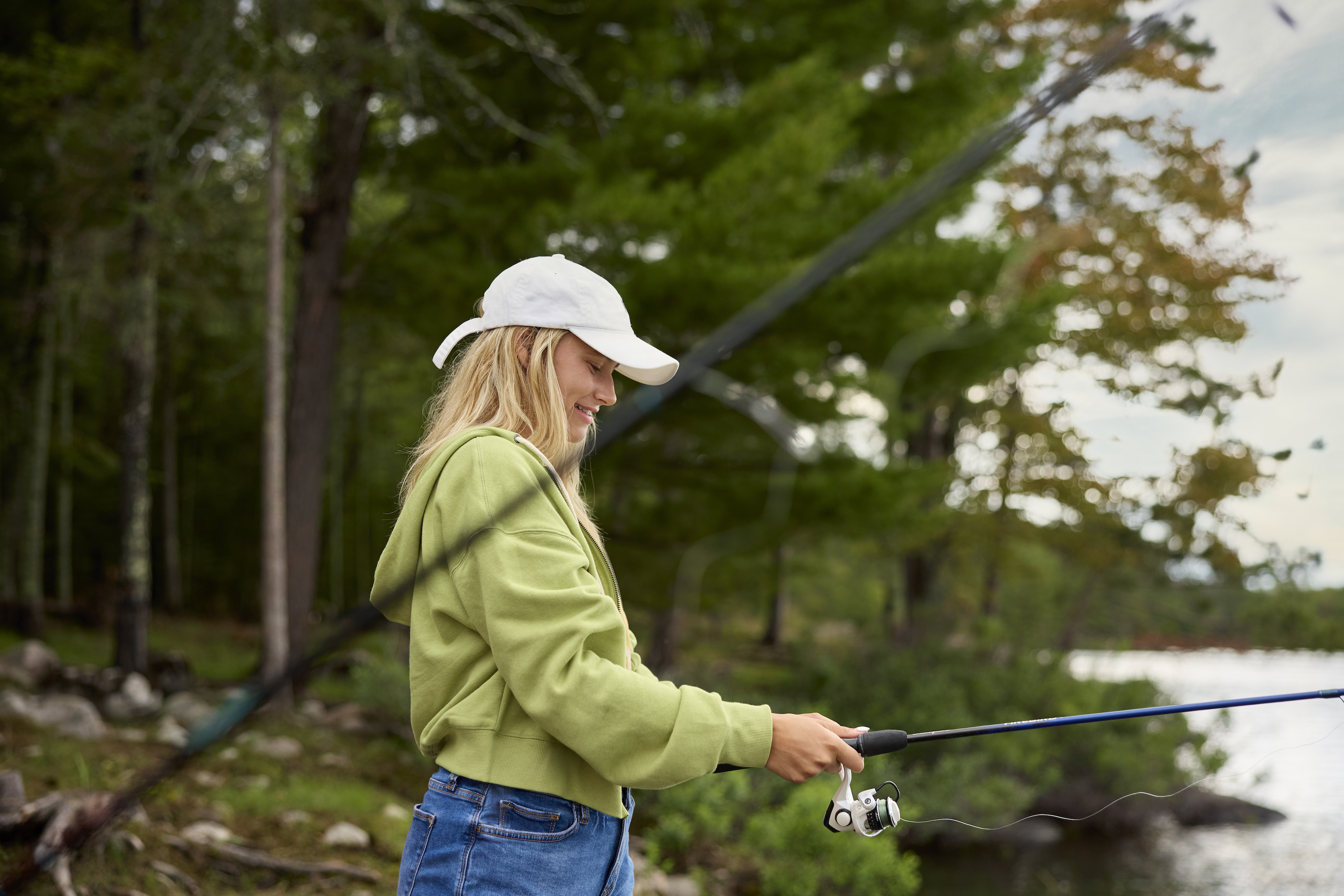
- Home
- Outdoors
- Fishing In Minnesota
Where to Go Walleye Fishing in Minnesota
For many anglers, the sight of an elusive olive and gold fish with an unmistakable white tip on its tail is enough to send chills up their spine. Here is how you can increase your chances of catching walleye, the most popular fish in Minnesota for a reason....
What are walleye?
Walleye are warm-water fish that naturally reproduce in about 260 lakes across the state. The Department of Natural Resources also stocks them in another 1,300 lakes. As a result, anglers can find good populations of walleye from the prairie lakes of the southwest to the deep and cold lakes of the northeast, and everywhere in between.
In fact, walleye are so synonymous with fishing in Minnesota that two well-known fishing towns — Garrison on the shores of Mille Lacs Lake and Baudette on the south side of Lake of the Woods — each lay claim to being the “Walleye Capital of the World”. Baudette also boats a massive Willie the Walleye statue that's worth a selfie or two.

What are their seasonal patterns?
By the time Minnesota’s walleye fishing season opens on the second Saturday of May, walleye in most parts of the state are either spawning or have just spawned. Walleye spawn over clean gravel bottoms in shallow water and around areas with current that keeps their eggs oxygenated.
Early in the season, anglers can find walleye in and around those areas, generally in water less than 10 feet deep. As the water temperature rises and lake vegetation starts to grow — generally in the early part of June — walleye move away from their spawning areas and into the areas where they’ll spend the summer.

Common summertime walleye locations include drop-offs, edges, and beds of vegetation such as cabbage and coontail. When the sun is bright during the day, walleye will remain near the bottom or tucked in tight among the weeds. On cloudy days and after the sun sets, they become more active, moving up in the water column and toward the shallow tops of sunken islands, where they pursue minnows and perch.
Walleye are particularly focused on foraging during the fall. Deep water near structure is a good place to locate hungry fall walleye. They can be far less active during the winter, but they will feed on the tops and edges of structure and around vegetation that remains green throughout the coldest months of the year.

How do you catch walleye?
Walleye are most active during low-light periods, which means the early morning and evening hours are best. Exceptions are cloudy days, as well as windy days when the waves on the surface of the water reduce light penetration. In these situations, walleye may bite all day long.
Catching them doesn’t have to be a complex affair and anglers can get by with a handful of lures and baits. One of the best is a live-bait rig, which allows anglers to troll a leech, minnow or nightcrawler slowly along the bottom. These rigs include a ¼- to ½-ounce sinker (just enough weight to maintain contact with the bottom), a swivel, a 3- to 6-foot leader of 6-pound test fishing line, and a No. 4 or No. 6 hook.

Troll the rig slowly around likely areas. If you catch a walleye or two, it’s time to slow down and fish the area more thoroughly. A good option for that is a jig with live bait attached to it. Cast the jig to the area and retrieve it along the bottom, or hover over the fish, let down the jig, and hold it right in front of their faces. If you’re fishing after dark, or on a windy day, another good option is to tie on a minnow-imitating crankbait and drag the lure through likely areas.
Trolling isn’t possible during the winter, of course, but jigs and live bait, or spoons, work well when dropped down a hole and jigged near the bottom.

What are the best lakes for walleye?
Walleye waters abound in Minnesota. In the southern part of the state, the Fairmont Chain of Lakes near the city of Fairmont and Lake Washington just north of Mankato are good places to try.
In the Twin Cities metro area, lakes such as Minnetonka and Waconia are good options, as are the Mississippi and St. Croix rivers. Green Lake near Willmar boasts a strong walleye population, as does Lake Minnewaska near Glenwood and Lake Miltona north of Alexandria.

The northern part of Minnesota is home to some of the state’s largest and well-known walleye waters. Among them are Leech Lake near Walker, Lake Winnibigoshish northwest of Grand Rapids, Lake Vermilion near Tower, Upper Red north of Bemidji, and Lake of the Woods on the state’s border with Canada.
Another border water farther east — Rainy Lake, right near the revelatory dark skies of Voyageurs National Park — also offers exceptional walleye fishing.
Read more about fishing in Minnesota and where to eat walleye.

